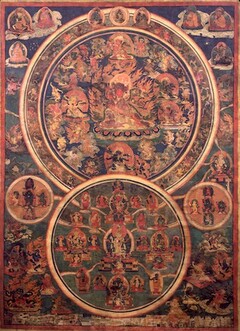Dying and the Bardos
English (19) | Deutsch (7) | Español (6) | Français (7) | Português (9) | Italiano (4) | 中文 (4) | བོད་ཡིག (19)
Texts related to the process of dying and the so-called intermediate states or bardos:
Bardos
revealed by Karma Lingpa
Dying
by
Jigme Lingpa
Prayers
by
Jigme Lingpa
by
Jigme Lingpa
